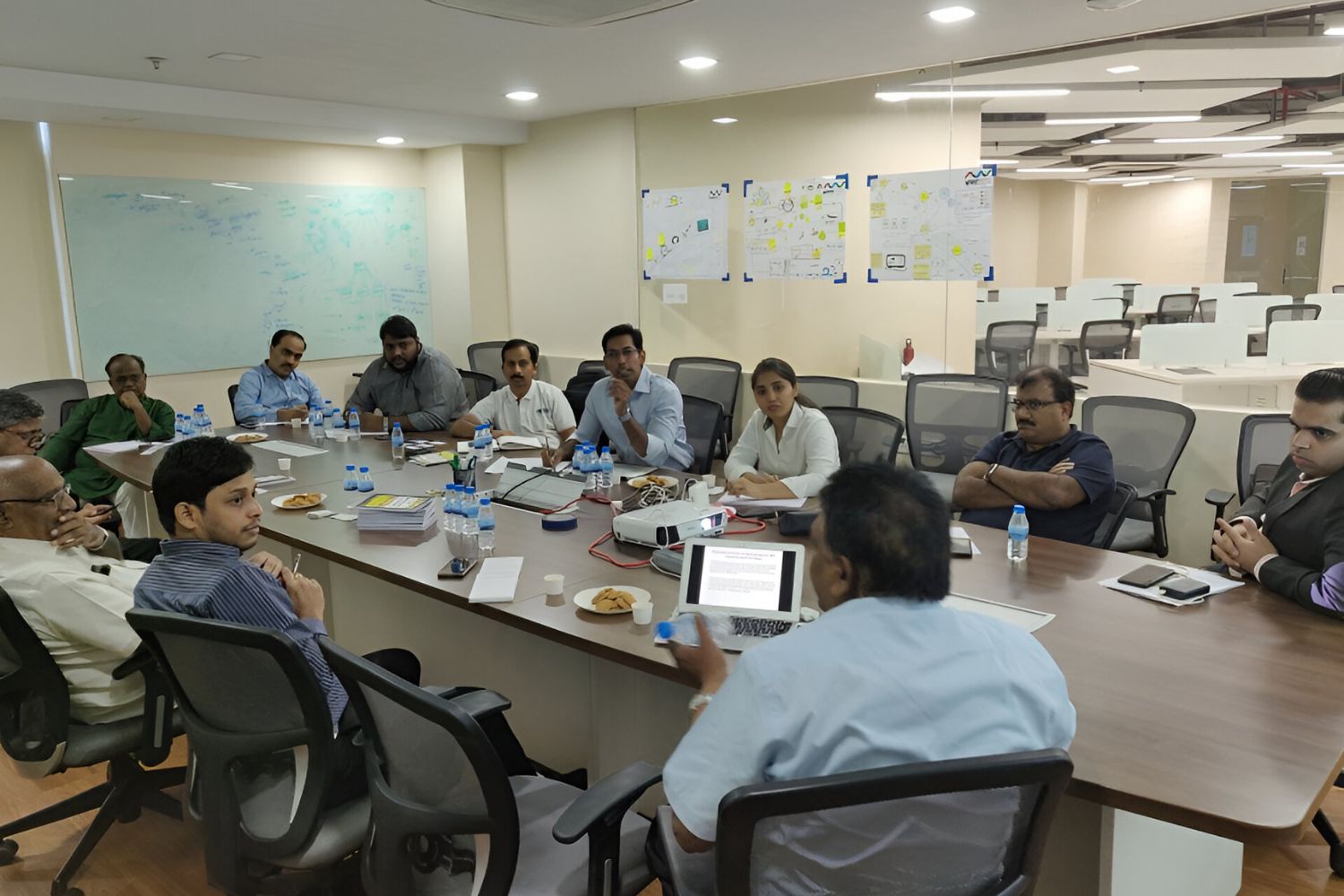Introduction
Welcome to the exciting world of fintech, where technology and finance converge to revolutionize the financial services industry. Fintech, short for financial technology, refers to businesses that use innovative technologies to create and improve financial products and services. With the rise of smartphones, the internet, and data analytics, the fintech industry has experienced explosive growth in recent years, disrupting traditional banking and opening up new opportunities for entrepreneurs.
If you have a passion for finance and technology and want to start your own fintech company, you’re in the right place. In this article, we will guide you through the key steps to launch a successful fintech startup, from finding a problem to solve and conducting market research to securing funding and scaling your business.
First and foremost, starting a fintech company requires identifying a problem or pain point in the financial industry that you are passionate about solving. Perhaps it’s streamlining the lending process, improving financial literacy, or providing access to financial services for underserved populations. By addressing a specific problem, you can differentiate yourself in a crowded market and create a compelling value proposition for your target audience.
Once you have identified the problem, conducting thorough market research is crucial to understand the competitive landscape, customer needs, and market trends. This research will help you validate your business idea and identify the unique selling points that will make your fintech solution stand out. It’s important to gather both quantitative and qualitative data, analyze industry reports, and interview potential customers to gain deep insights into their pain points and expectations.
With a clear understanding of your target audience, you can now start developing a comprehensive business plan. Your business plan should outline your mission, vision, target market, competitive advantage, revenue model, and marketing strategies. It will serve as a roadmap for your company’s growth and help you secure funding from investors or financial institutions.
Legal and regulatory considerations are also essential in the fintech industry. Depending on the nature of your fintech business, you may need to comply with financial regulations, data protection laws, and licensing requirements. It’s crucial to consult with legal experts and stay updated on changing regulations to ensure your startup operates within the legal framework.
Securing funding is often a challenge for early-stage startups. You can explore various funding options, such as bootstrapping, angel investors, venture capital, or government grants. Presenting a compelling business plan, demonstrating market potential, and showcasing a strong team are key factors in attracting investors.
Building a talented and diverse team is vital for the success of your fintech startup. Look for individuals with a strong background in finance, technology, marketing, and compliance. Collaborate with individuals who share your vision and values, as they will contribute to the culture and growth of your company.
With a solid team in place, you can start developing your minimum viable product (MVP) – a simplified version of your fintech solution that addresses the core problem. The MVP allows you to gather user feedback and make necessary iterations based on real-world usage.
Once you have iterated and refined your product, it’s time to launch your fintech startup. Develop a strategic marketing and customer acquisition plan to create awareness and attract early adopters. Leverage digital marketing channels, content creation, social media, and partnerships to reach your target audience effectively.
Finding a Problem to Solve in Fintech
In the world of fintech, identifying a problem to solve is the foundation of your startup. To be successful, you must address a pain point or inefficiency in the financial industry. Start by asking yourself: What challenges exist in the financial sector that technology can solve?
One approach is to look at your own experiences as a consumer of financial products and services. Have you ever struggled with the traditional banking system or faced obstacles in accessing credit or managing your finances? Perhaps you’ve encountered difficulties in making cross-border payments or found it challenging to save or invest effectively. Consider these personal experiences as potential sources of inspiration.
Another avenue is to analyze trends and market reports to identify emerging problems in the financial sector. Keep an eye on technological advancements, changing consumer behaviors, and evolving regulatory landscapes. For example, the rise of digital currencies and blockchain technology has opened up opportunities for secure and efficient cross-border transactions, but challenges in adoption and regulation still exist.
Furthermore, consider the needs of underserved populations and emerging markets. Many individuals, especially in developing countries, lack access to basic financial services. Bridging this gap and providing inclusive financial solutions can have a profound impact on their lives and drive significant business growth.
Conducting thorough market research is essential when finding a problem to solve in fintech. Start by analyzing existing solutions and competitors in the market. Identify their strengths and weaknesses, and find gaps where you can differentiate yourself and offer a better product or service.
Additionally, reach out to potential customers and industry professionals to gain deep insights about their pain points and challenges. Conduct surveys, interviews, or focus groups to understand their frustrations and expectations. Listen to their stories and pay attention to their needs. This customer-centric approach will not only guide your problem-solving process but will also help you develop a product that meets real-world demands.
Remember, innovation and problem-solving go hand in hand. By identifying an industry problem and addressing it with a unique and technological solution, you have the opportunity to disrupt the financial sector and create significant value for your customers.
Conducting Market Research
Market research is a crucial step in the process of starting a fintech company. It involves gathering and analyzing data to understand the market dynamics, customer preferences, and competition in the industry. By conducting thorough market research, you can validate your business idea, identify opportunities, and make informed decisions that will set your fintech startup up for success.
Start by defining your research objectives. What specific information do you need to gather? Are you trying to understand customer behavior, market size, or industry trends? Clearly defining your research goals will help you focus your efforts and ensure that you collect the right data.
Next, gather both qualitative and quantitative data. Qualitative data provides insights into customer experiences, pain points, and expectations. This can be gathered through interviews, surveys, or focus groups. Quantitative data, on the other hand, offers statistical information about market size, customer demographics, and trends. This can be obtained through industry reports, surveys, or data analytics tools.
When conducting market research, it’s important to analyze industry reports and publications to understand the current state of the fintech market. Look for market trends, growth projections, and potential areas of disruption. This will give you a holistic view of the industry landscape and opportunities for your fintech startup.
Additionally, study your competitors. Identify who they are and analyze their products, pricing strategies, target markets, and marketing approaches. This information can help you differentiate your fintech solution and capitalize on unmet market needs.
Conducting primary research is equally important. Reach out to potential customers, industry experts, and stakeholders to gain insights about pain points, expectations, and potential demand for your product. This can be done through surveys, interviews, or focus groups.
When analyzing the data collected, look for patterns, trends, and common themes. Identify the most pressing pain points and prioritize them based on their potential for market disruption and your ability to solve them effectively.
Finally, use market research to refine your value proposition and positioning. Based on the insights gathered, clearly define what sets your fintech offering apart from the competition and how it addresses the identified market needs. This will guide your product development, marketing strategies, and customer acquisition efforts.
Remember, market research is an ongoing process. Continuously monitor the industry, customer feedback, and market trends to stay ahead of the curve. Regularly update your research and pivot your strategies if necessary to adapt to changing market conditions.
Defining Your Target Audience
When starting a fintech company, it’s essential to have a clear understanding of your target audience. Your target audience consists of the people or businesses who are most likely to benefit from and use your fintech product or service. By defining your target audience, you can tailor your marketing strategies, product development, and customer acquisition efforts to meet their specific needs and preferences.
Start by analyzing the problem you are solving and the value proposition of your fintech solution. Who is most affected by this problem? Who stands to benefit the most from your solution? Look for demographic, behavioral, and psychographic characteristics that define your ideal customer.
Demographic characteristics include age, gender, occupation, income level, and location. For example, if your fintech solution addresses the needs of small business owners, your target audience might include business owners in a specific industry or geographical area.
Behavioral characteristics encompass the actions, interests, and behaviors of your target audience. This includes their financial habits, technology adoption, preferred channels of communication, and willingness to embrace innovation. Understanding their behaviors will help you design a product and marketing campaigns that resonate with them.
Psychographic characteristics delve into the values, attitudes, and lifestyles of your target audience. This includes their financial goals, risk tolerance, beliefs about money, and overall financial literacy. By understanding their psychographic profiles, you can craft messaging and imagery that appeals to their unique motivations and aspirations.
Consider conducting market research to gather data and insights about your target audience. Surveys, interviews, and focus groups can provide valuable information about their pain points, preferences, and expectations. Use the insights gained from market research to create buyer personas – fictional representations of your ideal customers. These personas will serve as a guide throughout your product development and marketing initiatives.
Once you have a clear understanding of your target audience, tailor your marketing strategies to effectively reach and engage them. Identify the most relevant communication channels, such as social media platforms, industry publications, or professional networks, and create compelling content that addresses their pain points and showcases the benefits of your fintech solution.
As your fintech startup grows, continuously monitor and analyze your target audience. Their needs and preferences may evolve over time, requiring adjustments to your product or marketing strategies to ensure your fintech solution remains relevant and valuable to them.
Remember, defining your target audience is a dynamic process. Be open to feedback, adapt to changing market conditions, and continuously seek to deepen your understanding of your customers to drive the success of your fintech startup.
Developing a Business Plan
A well-developed business plan is essential for the success of your fintech startup. It serves as a roadmap that outlines your mission, vision, target market, competitive advantage, revenue model, and marketing strategies. A comprehensive business plan not only guides your decision-making but also attracts investors and potential partners who see the potential in your fintech venture.
Start by clearly defining the problem that your fintech solution solves, and articulate your unique value proposition. What sets your product or service apart from competitors? How does it address the pain points of your target audience in a differentiated and impactful way?
Next, identify your target market and conduct a thorough analysis of its size, trends, and customer segments. Understand the needs and preferences of your target audience to tailor your product offering and marketing strategies. This analysis will also help you identify potential barriers to entry and competitive advantages that you can leverage.
Develop a detailed revenue model that outlines how your fintech startup will generate revenue. Consider the pricing strategy, revenue streams, and projected financials. Take into account factors such as customer adoption rates, customer lifetime value, and costs associated with acquiring and servicing customers.
Marketing and customer acquisition strategies are essential components of your business plan. Determine the most effective channels for reaching your target audience and outline your marketing campaigns and tactics. Include strategies for acquiring customers, retaining them, and growing your customer base over time.
Furthermore, consider the organizational structure and team required to successfully execute your business plan. Define key roles and responsibilities and highlight the skills and experience needed to build and scale your fintech startup. Investors will want to see that you have a team in place that can execute on your vision.
It’s important to conduct a comprehensive analysis of the legal and regulatory landscape as it relates to your fintech startup. Understand the compliance requirements, licensing obligations, and potential risks associated with operating in the financial industry. Address any legal and regulatory considerations in your business plan to demonstrate your commitment to operating within the legal framework.
Finally, outline your funding requirements and potential sources of capital. Identify the amount of capital needed to launch and scale your fintech startup and explore funding options such as self-funding, loans, angel investors, venture capital, or government grants. Present a compelling business case for potential investors, showcasing the market potential and expected return on investment.
Remember, a business plan is a living document that should be updated and adapted as your fintech startup evolves. Regularly review and revise your business plan to reflect changing market conditions, industry trends, and feedback from stakeholders.
Legal and Regulatory Considerations
When starting a fintech company, navigating the legal and regulatory landscape is crucial to ensure compliance and mitigate potential risks. The financial industry is heavily regulated, and understanding the legal framework that applies to your fintech startup is essential for its success. Here are some important legal and regulatory considerations to keep in mind:
Firstly, familiarize yourself with the financial regulations that govern your specific area of fintech. Depending on your business model and the services you offer, you may need to comply with regulations related to consumer protection, data privacy, anti-money laundering (AML), know-your-customer (KYC) requirements, and more. Research the applicable regulations at both the national and international levels to ensure compliance.
Consult with legal professionals who specialize in fintech to navigate through the complexities of the regulatory landscape. They can provide guidance on licensing requirements, regulatory compliance, and legal obligations specific to your jurisdiction. Engaging legal experts early on in the process can help you navigate potential hurdles and avoid costly mistakes down the line.
In addition to financial regulations, data protection laws are critical considerations, especially in the era of digital finance. Safeguarding sensitive customer data is not only a legal requirement but also vital for building trust with your customers. Understand the data protection laws and implement robust security measures to protect your users’ information.
Stay updated on evolving regulatory frameworks and industry standards. The fintech industry is fast-paced, and regulations are continuously evolving to address new challenges and technological advancements. Attend industry conferences, join fintech associations, and actively participate in discussions to keep abreast of the latest regulatory developments.
Address compliance and risk management in your business plan and operational strategies. Demonstrate a clear understanding of the legal requirements and articulate your plans for ensuring compliance throughout your fintech startup’s operations. Implement internal controls and procedures to mitigate risk and meet regulatory obligations.
Consider the potential impact of regulations on your business model and competitive advantage. Some regulations may create barriers to entry or impose additional costs that could impact your profitability. Conduct a thorough analysis of the regulatory environment and adapt your business strategies accordingly.
Lastly, foster transparency and ethical practices within your fintech startup. Establish strong corporate governance and compliance practices to build trust with regulators, investors, and customers. Communicate your adherence to ethical standards and your commitment to regulatory compliance, which can differentiate your fintech company in the market.
Remember, compliance with legal and regulatory obligations should always be a top priority. It not only ensures the long-term sustainability of your fintech startup but also protects the interests of your customers and stakeholders.
Securing Funding for Your Fintech Startup
Securing funding is a critical step in launching and scaling your fintech startup. Whether it’s through self-funding, angel investors, venture capital, or government grants, having access to financial resources is essential to bring your fintech solution to market. Here are some key strategies to consider when securing funding for your fintech startup:
First, start with a solid business plan. A well-developed business plan will showcase the potential of your fintech solution, market opportunity, revenue model, and growth strategies. It will serve as a roadmap that investors can assess to understand the viability and scalability of your startup.
Explore self-funding options. Invest your own money into your fintech startup to demonstrate your commitment and belief in your venture. This will show potential investors that you have skin in the game and are willing to take risks to make your dream a reality.
Consider angel investors, who are individuals or groups that provide capital to early-stage startups in exchange for equity. Angel investors not only bring financial resources but also expertise and connections that can help your fintech startup thrive. Present a compelling case to angel investors that highlights your unique value proposition, market potential, and your ability to execute your business plan.
Venture capital firms are another valuable source of funding for fintech startups. These firms provide capital in exchange for equity and often have a specific focus on investing in early-stage or high-growth fintech companies. Research venture capital firms that specialize in fintech and tailor your pitch to align with their investment criteria.
Government grants and support programs can also be a valuable source of funding for your fintech startup. Research grants and programs offered by local or national government organizations that focus on fostering innovation in the financial sector. These grants can provide financial support, mentorship, and networking opportunities that can fuel the growth of your fintech startup.
Prepare a compelling pitch and investor presentation. Clearly communicate your value proposition, market opportunity, and your competitive advantage. Showcase your team’s expertise and highlight any traction or milestones achieved. Use data and market research to support your claims and project your financial projections in a realistic and well-supported manner.
Network within the fintech community. Attend industry conferences, join fintech networking groups, and participate in startup competitions. Building relationships with industry experts, potential investors, and mentors can open doors to funding opportunities and valuable connections.
Be prepared for due diligence from potential investors. They will want to thoroughly assess the potential risks and returns of investing in your fintech startup. Have all necessary documentation ready, including financial statements, intellectual property protection, legal contracts, and compliance documents.
Finally, be persistent and patient. Securing funding can be a time-consuming process, and you may face rejections along the way. Use feedback from investors to refine your pitch and strengthen your business plan. Stay focused and determined, and leverage every opportunity to demonstrate the potential of your fintech startup.
Remember, securing funding is not just about the money, but also about the added value and connections that investors can bring. Choose investors who align with your vision, values, and long-term goals, as they can provide guidance and support as your fintech startup grows.
Building Your Team
Building a talented and dedicated team is essential for the success of your fintech startup. The right team can bring diverse skills, expertise, and perspectives that complement each other and drive innovation. Here are some key considerations when building your fintech startup team:
Identify the key roles and responsibilities needed to bring your fintech solution to life. This may include positions such as technology specialists, financial experts, marketing professionals, compliance officers, and customer support representatives. Define the skill sets and experience required for each role to ensure a well-rounded team.
Look for individuals who are not just highly skilled but also share your passion and vision for your fintech startup. Seek team members who are willing to embrace challenges, take risks, and work collaboratively to achieve common goals. Cultural fit and alignment with your mission and values are important factors to consider.
Consider the balance between experienced professionals and fresh talent. Experienced individuals can bring industry knowledge and mentorship, while young and motivated team members can bring fresh ideas and perspectives. Creating a diverse team with a mix of experiences and backgrounds can foster creative thinking and innovation.
Networking is a powerful tool for finding potential team members. Attend industry events, join fintech groups, and engage with online communities to connect with individuals who are passionate about fintech and have the skills you need. Build relationships, exchange ideas, and leverage your network to find the right talent for your fintech startup.
When interviewing candidates, evaluate not only their technical skills but also their problem-solving abilities, adaptability, and willingness to learn. Fintech is a dynamic and rapidly evolving field, so having team members who can quickly adapt to change and embrace new technologies is crucial.
Consider the size and structure of your team. As a startup, you may need to be lean and agile in the early stages. However, ensure that you have the necessary bandwidth to execute your business plan effectively. As your fintech startup grows, reassess the team’s needs and expand accordingly.
Cultivate a positive and collaborative work culture. Encourage open communication, feedback, and continuous learning among team members. Foster an environment where everyone feels valued and their voices are heard. A strong team culture not only enhances productivity but also attracts top talent to your fintech startup.
Invest in professional development and provide opportunities for growth within your team. Offer training programs, mentorship, and cross-functional experiences to help team members expand their skills and advance their careers. This will not only retain top talent but also foster a culture of continuous learning and improvement.
Regularly evaluate the performance and alignment of your team members with your fintech startup’s goals. Provide feedback and recognition to motivate and support their professional growth. Address any performance issues promptly and make necessary changes to ensure the success of your team.
Remember, building an exceptional team is an ongoing process. Foster a culture of innovation, collaboration, and continuous improvement. By assembling the right mix of skills, expertise, and passion, your fintech startup can thrive and achieve its goals.
Developing Your Minimum Viable Product (MVP)
Developing a Minimum Viable Product (MVP) is a critical step in the process of bringing your fintech startup to market. An MVP is a simplified version of your product or service that focuses on solving the core problem for your target audience. It allows you to gather feedback, validate your assumptions, and iterate based on real user data. Here are some key considerations when developing your fintech startup’s MVP:
Start by identifying the core problem that your fintech solution addresses and the key features that will solve this problem. Focus on building the essential functionalities that provide the most value to your target audience. Remember, the goal of an MVP is to provide a basic, functional product that validates your concept, not to deliver a fully polished and feature-rich solution.
Engage with your target audience early on to understand their needs and gather their input. Conduct user research, interviews, or test groups to gain insights into their pain points and expectations. Involve them in the development process, seek their feedback, and integrate it into your MVP. This user-centric approach ensures that your product aligns closely with your audience’s needs.
When developing your MVP, prioritize speed and efficiency. Build a scalable and modular architecture that allows for flexibility and easy iteration. Consider using existing technologies, frameworks, or third-party services to accelerate development and reduce time to market. This approach enables you to quickly test and validate your hypotheses.
Design an intuitive user interface (UI) and user experience (UX) that allows users to easily navigate and interact with your fintech solution. Keep the interface clean and uncluttered, focusing on the core features and functionality. Use feedback from user testing to refine the design and improve usability.
Although your MVP may not be fully polished, ensure that the product is stable, reliable, and secure. Address any critical bugs, security vulnerabilities, or performance issues that could impact user experience and trust. Maintaining a high level of quality and reliability is crucial, even in the early stages of product development.
Define metrics and key performance indicators (KPIs) to measure the success of your MVP. These could include user engagement, conversion rates, retention rates, or specific milestones that indicate progress. Collect and analyze data to understand user behavior and identify areas for improvement and optimization.
Iterate based on user feedback and data analysis. Continuously refine and enhance your MVP based on the insights gained from real user interactions. Incorporate user suggestions and priorities into your development roadmap. The iterative process will help you build a product that closely aligns with user needs and preferences.
Finally, communicate transparently with your early adopters about the nature of the MVP and set realistic expectations. Seek their feedback, address their concerns, and keep them informed about upcoming updates and improvements. Cultivate a community of early adopters who are engaged and invested in the future success of your fintech startup.
Remember, the MVP is just the starting point. Use the insights gained from its development to guide your product roadmap and shape your future features and functionalities. The MVP serves as a foundation for testing assumptions, validating your business model, and gathering market feedback, ultimately leading to a more robust and successful fintech solution.
Testing and Iterating Your Product
Testing and iterating your product is a crucial phase in the development of your fintech startup. This process allows you to gather feedback, identify areas for improvement, and refine your product based on real user data. Here are some key considerations when testing and iterating your fintech product:
Start by clearly defining your testing objectives. What specific aspects of your fintech product do you want to evaluate? Whether it’s usability, performance, security, or user experience, having a clear focus will help guide your testing efforts.
Conduct thorough testing to ensure that your product is stable, reliable, and secure. Test all functionalities, features, and user workflows to identify and address any bugs, errors, or performance issues. Consider employing automated testing tools to streamline the process and ensure consistent and comprehensive testing coverage.
Engage real users in the testing process to gather feedback and insights. Conduct user acceptance testing (UAT), where users interact with your product and provide feedback on their experience. This feedback can help you identify pain points, usability challenges, or areas where the product may not be meeting user expectations.
Collect both qualitative and quantitative data during the testing phase. Qualitative data can be gathered through user interviews, surveys, or observation sessions. This data provides insights into user preferences, pain points, and overall satisfaction. On the other hand, quantitative data can be collected through metrics, such as user engagement, conversion rates, or time spent on specific features. This data allows you to measure the performance and success of your product objectively.
Iterate based on the feedback and data collected during the testing phase. Prioritize the most critical feedback and make necessary improvements or adjustments to your product. Take an agile approach, releasing new iterations or updates regularly to continuously refine and enhance your fintech solution.
Communicate with your users throughout the iteration process. Keep them informed about updates, bug fixes, and new features. Actively seek their feedback on the new iterations and demonstrate that you value their input. This iterative communication fosters a sense of ownership and engagement among your user base.
Be open to constructive criticism and embrace the concept of a minimum viable product (MVP). Accept that your initial version of the product will not be perfect and that it will evolve based on user feedback and market dynamics. Emphasize learning and improvement as you iterate and refine your fintech product.
Monitor and analyze user behavior and metrics after each iteration. Assess how the changes you’ve implemented have impacted user engagement, retention, or conversion rates. This analysis will enable you to make data-driven decisions and prioritize future iterations based on the needs and preferences of your target audience.
Involve your team and stakeholders in the iteration process. Encourage a culture of continuous improvement and innovation within your fintech startup. Encourage your team to share insights and ideas for enhancing the product, and collaborate with stakeholders to align product development with larger strategic goals.
Remember, testing and iterating are ongoing processes. Continuously seek user feedback, keep abreast of industry trends, and solicit input from experts to ensure that your fintech product remains relevant, compelling, and valuable in a rapidly evolving market.
Launching Your Fintech Startup
Launching your fintech startup is an exciting and critical milestone in turning your vision into a reality. It’s the culmination of all your hard work, research, and product development. A successful launch is crucial to gaining traction, attracting customers, and establishing your presence in the market. Here are some key considerations when launching your fintech startup:
Develop a comprehensive launch plan that outlines the key steps, milestones, and activities leading up to the launch. This plan should include targeted marketing strategies, communication channels, and a timeline for execution. Have a clear understanding of your target audience and tailor your launch strategies to reach and engage them effectively.
Create a buzz around your launch by leveraging various marketing channels. Utilize social media platforms, content creation, industry partnerships, and targeted advertising to build anticipation and excitement. Craft compelling messaging that highlights the unique value proposition of your fintech solution and its benefits to potential users.
Build a user-friendly and visually appealing website or landing page that showcases your fintech product or service. Clearly communicate your value proposition, features, and benefits. Include engaging and informative content that educates users about the problem you solve and how your solution addresses their needs.
Generate pre-launch interest and gain early adopters by offering exclusive access, free trials, or incentives. Launch a beta testing program to gain valuable feedback from early users and refine your product based on their input. Implement any necessary improvements before the official launch to ensure a positive user experience.
Equip your support team to provide excellent customer service during and after the launch. Promptly address user inquiries, feedback, and technical issues. Having a responsive and knowledgeable support team will enhance user satisfaction and build trust in your fintech startup.
Create a public relations (PR) strategy to generate media coverage and increase awareness of your fintech startup. Reach out to industry influencers, journalists, and bloggers who cover fintech topics. Highlight your unique selling points, target audience, and the problem you solve in your pitches for media coverage.
Establish partnerships and collaborations with other players in the fintech ecosystem. Partnering with financial institutions, technology providers, or other complementary fintech startups can help expand your reach, access new markets, and leverage their expertise. Seek out mutually beneficial partnerships that align with your strategic goals.
Monitor and analyze key metrics during the launch phase. Track user acquisition, engagement, and conversion rates to measure the success of your launch strategies. Assess the effectiveness of marketing campaigns, customer acquisition channels, and user onboarding processes. Utilize analytics tools to gain insights and identify areas for optimization.
Collect user reviews, testimonials, and case studies to build social proof and credibility. Positive feedback and success stories from early adopters can significantly influence potential customers’ decision to choose your fintech solution over competitors.
Continuously iterate and improve based on user feedback and market dynamics. Launching your fintech startup is just the beginning of an ongoing journey. Stay focused on continuous improvement, innovation, and staying ahead of the competition. Regularly assess the market landscape, customer needs, and emerging trends to adapt your strategies and product offering accordingly.
Remember, a successful launch sets the tone for your fintech startup’s future. Engage with your target audience, build brand awareness, and deliver an exceptional user experience. Launching your fintech startup is a major accomplishment, but it’s just the starting point for the long-term growth and success of your venture.
Marketing and Customer Acquisition Strategies
Effective marketing and customer acquisition strategies are essential for the growth and success of your fintech startup. By reaching and engaging your target audience, you can generate awareness, build brand credibility, and acquire valuable customers. Here are some key considerations when developing your marketing and customer acquisition strategies:
Start by clearly defining your target audience and understanding their needs, preferences, and behaviors. Develop customer personas that represent your ideal customers, including demographic, psychographic, and behavioral characteristics. This will help you tailor your marketing strategies and messages to resonate with your target audience.
Build a strong brand identity that reflects your fintech startup’s values, mission, and unique value proposition. Establish a consistent visual identity and tone of voice that aligns with your target audience’s preferences. Ensure that your brand messaging clearly communicates the problem you solve and the benefits of your fintech solution.
Utilize digital marketing channels, such as search engine optimization (SEO), social media marketing, content marketing, and email marketing, to reach and engage your target audience. Develop a content strategy that provides valuable and educational content related to the financial industry and the pain points your fintech solution addresses.
Invest in search engine optimization (SEO) to improve your website’s visibility in search engine results. Conduct keyword research to identify relevant keywords and optimize your website and content accordingly. Create informative and engaging content that targets these keywords to attract organic traffic to your website.
Develop a social media strategy to leverage platforms where your target audience is most active. Engage with users by sharing industry insights, news, and updates. Encourage users to share their experiences with your fintech solution and prompt them to refer others to your platform.
Consider partnering with influencers or industry experts who can help promote your fintech startup. Collaborate with influential figures in the financial industry to endorse your solution, provide guest blog posts, or participate in webinars or podcasts. Their support can help build credibility and expand your reach.
Implement referral programs or affiliate marketing to incentivize existing customers to refer your fintech solution to others. Offer rewards, discounts, or exclusive access to encourage loyal customers to advocate for your product. Word-of-mouth marketing can be a powerful tool for attracting new users.
Optimize your website and landing pages for conversion by creating clear call-to-actions, minimizing friction in the user journey, and instilling trust through testimonials, reviews, and security badges. Continuously test and refine your conversion strategies to maximize the number of visitors who become customers.
Monitor key performance metrics to assess the effectiveness of your marketing and customer acquisition strategies. Track metrics such as customer acquisition cost, customer lifetime value, conversion rates, and customer retention. Analyze the data and use it to refine your strategies and optimize your marketing campaigns.
Gain insights from user data and analytics to better understand user behavior, preferences, and pain points. Leverage data to personalize customer experiences, provide targeted messaging, and enhance user engagement. The more you understand your customers, the better you can tailor your marketing efforts to meet their needs.
Continuously test and iterate your marketing strategies. Experiment with different channels, tactics, and messaging. A/B test your campaigns to optimize performance and uncover new opportunities. Stay up to date with industry trends and emerging marketing technologies to stay ahead of the competition.
Remember, marketing and customer acquisition strategies are ongoing processes. Continuously analyze and adjust your strategies based on user feedback, market dynamics, and the evolving needs of your target audience. By understanding and effectively marketing to your target audience, you can drive growth and solidify your position in the competitive fintech landscape.
Scaling and Growth Strategies
Scaling your fintech startup is an exciting phase that requires careful planning, execution, and strategic decision-making. Scaling allows you to expand your customer base, increase revenue, and solidify your position in the market. Here are some key considerations when developing scaling and growth strategies for your fintech startup:
Assess your product-market fit to ensure that there is demand for your fintech solution at scale. Evaluate customer feedback, user acquisition metrics, and market trends to validate the scalability of your product. Understand the scalability limitations and potential challenges that may arise as you expand.
Optimize your operations and infrastructure to support growth. Strengthen your technology infrastructure to handle increased user traffic and transaction volume. Consider cloud-based solutions that provide scalability and flexibility. Automating processes and streamlining operations will help your fintech startup handle growth efficiently.
Expand your target market and customer base. Identify new customer segments or untapped markets that can benefit from your fintech solution. Conduct market research to understand the unique needs and preferences of these segments. Adapt your marketing strategies and messaging to attract and engage these new audiences.
Develop strategic partnerships to fuel growth. Collaborate with complementary fintech startups, financial institutions, or technology providers to leverage their expertise and reach. Strategic partnerships can help expand your offerings, access new markets, and enhance your competitive advantage.
Expand your product offering or add new features to cater to evolving customer needs. Listen to user feedback, stay informed about industry trends, and identify opportunities for innovation. Continuously enhance and iterate your fintech solution to ensure that it remains relevant and valuable.
Invest in customer retention strategies to drive long-term growth. Build strong relationships with your existing customers through personalized experiences, outstanding customer support, and regular communication. Develop loyalty programs, referral initiatives, or exclusive benefits to incentivize customer loyalty and encourage them to become advocates for your fintech startup.
Consider expanding geographically to tap into new markets. Conduct thorough market research and assess regulatory and cultural nuances of each expansion opportunity. Customize your marketing and product strategies to align with the specific needs and preferences of the target market.
Secure additional funding to support scaling and growth. Explore funding options such as venture capital, corporate partnerships, or government grants. Develop a strong pitch, highlighting the market potential, traction, and scalability of your fintech startup to attract investors and secure the necessary financial resources.
Invest in talent acquisition and team development to support growth. As your fintech startup scales, you will need to hire individuals with the right skills and experience. Foster a positive and collaborative work culture to attract top talent and retain key team members. Continuously invest in your team’s professional development to ensure their skills align with your growth objectives.
Monitor and analyze key performance indicators (KPIs) to track the success of your scaling and growth strategies. Measure metrics such as revenue growth, customer acquisition cost, user engagement, and market share. Data-driven insights will help inform your decision-making and guide your next steps.
Stay agile and adaptable. Continuously assess market dynamics, industry trends, and customer needs. Be open to pivoting your strategies and making necessary adjustments to align with evolving market conditions and opportunities.
Remember, scaling requires a well-defined strategy, careful execution, and a customer-centric focus. By implementing strategic scaling and growth strategies, you can position your fintech startup for sustainable and long-term success in the competitive fintech landscape.
Maintaining Compliance and Security
Maintaining compliance and security is of utmost importance for your fintech startup. In the highly regulated and sensitive financial industry, ensuring the privacy and security of customer data is crucial to building trust and credibility. Here are some key considerations for maintaining compliance and security:
Stay informed about relevant regulations and standards that apply to your fintech business. Understand the legal and regulatory requirements specific to your jurisdiction and the services you offer. Regularly monitor changes and updates in regulations to ensure your fintech startup remains compliant.
Implement strong data protection measures to safeguard customer data. This includes following industry best practices for data encryption, access controls, and secure storage. Regularly assess your data security infrastructure and conduct vulnerability assessments to identify and address any potential security risks.
Adhere to strict privacy policies and obtain appropriate consent for collecting and using personal data. Comply with data protection laws such as the General Data Protection Regulation (GDPR) to ensure that you handle customer data in a transparent and responsible manner.
Implement robust authentication and authorization protocols to ensure that only authorized personnel and users have access to sensitive data and systems. Implement multi-factor authentication, role-based access control, and other security measures to minimize the risk of unauthorized access.
Conduct regular audits and assessments to evaluate your fintech startup’s compliance with applicable regulations and security standards. Engage third-party auditors or consultants to provide an objective assessment of your compliance and security practices. Address any identified issues promptly to maintain a high level of compliance and security.
Train and educate your team on compliance and security best practices. Foster a culture of compliance and security awareness by providing regular training sessions and updates. Ensure that all employees understand their responsibilities and the importance of maintaining compliance and security standards.
Establish incident response and disaster recovery plans in case of a security breach or data loss. Proactively identify potential risks and develop strategies to mitigate them. This includes regularly backing up data, implementing disaster recovery procedures, and conducting simulated exercises to test your response capabilities.
Regularly monitor and analyze security logs and user activity to detect and respond to any suspicious or malicious activities. Implement intrusion detection and prevention systems, security information, and event management (SIEM) tools to identify and respond to security incidents in real-time.
Engage with legal and security experts to stay updated on evolving compliance requirements and security best practices. Establish relationships with industry professionals who can provide guidance and advice on mitigating risks and maintaining compliance.
Communicate your commitment to compliance and security to your customers. Be transparent about your data security practices and the measures you have in place to protect their data. This will help build trust and confidence in your fintech startup.
Audit and monitor your third-party providers and vendors to ensure that they also meet compliance and security standards. Conduct due diligence before partnering with vendors and regularly assess their practices to ensure ongoing compliance and data security.
Remember, compliance and security should be embedded into the culture and operations of your fintech startup. By maintaining a strong focus on compliance and security, you can protect customer data, build trust, and ensure the long-term success and sustainability of your fintech startup in a highly regulated and security-conscious industry.
Building Long-Term Relationships with Customers
Building long-term relationships with customers is crucial for the growth and success of your fintech startup. By cultivating strong relationships, you can enhance customer loyalty, drive repeat business, and establish a solid foundation for your fintech venture. Here are key considerations for building long-term relationships with customers:
Focus on delivering exceptional customer experiences. Ensure that every interaction with your customers is positive, personalized, and reflects a deep understanding of their needs and preferences. Provide prompt and helpful customer support, and go above and beyond to exceed their expectations.
Stay connected with your customers through regular and meaningful communication. Provide timely updates about new features, product enhancements, or industry insights that may be relevant to them. Leverage email marketing, newsletters, or social media to stay top-of-mind and foster engagement.
Request and act upon customer feedback. Encourage customers to share their opinions, suggestions, and concerns. Actively listen to their feedback and demonstrate that their input is valued. Use customer feedback to drive product improvements, address pain points, and evolve your fintech solution to better meet their needs.
Offer loyalty programs or incentives to reward and incentivize customer loyalty. Consider providing exclusive benefits, discounts, or access to premium features for long-term customers. These initiatives can deepen customer engagement and provide an added incentive for customers to remain loyal to your fintech startup.
Recognize and appreciate your customers. Show gratitude for their continued support and trust in your fintech solution. Consider personalized gestures such as thank-you notes, special anniversary offers, or personalized recommendations that demonstrate your commitment to their success and satisfaction.
Engage with customers on social media and online communities. Participate in discussions and respond to customer inquiries and feedback. Leverage social media platforms as a means to engage, educate, and create a sense of community among your customers.
Provide educational resources and content that adds value to your customers’ financial lives. Develop blog articles, videos, or webinars that educate customers on financial best practices, industry trends, or tips for maximizing the use of your fintech solution. By enabling them to make informed decisions, you position yourself as a trusted resource.
Continuously innovate and evolve your fintech solution to meet changing customer needs and market demands. Keep a close eye on emerging technologies, new features in the industry, and customer preferences. Regularly release updates and enhancements that add value to your customers and enhance their overall experience.
Personalize your marketing and communication strategies. Leverage customer data and insights to segment your customer base and deliver targeted messages and offerings. Personalization enables you to create relevant and meaningful interactions that resonate with individual customers.
Be transparent and upfront with customers about any changes or updates to your fintech solution. Clearly communicate any modifications in terms of service, pricing, or features. Open and honest communication builds trust and demonstrates your commitment to maintaining a long-term relationship with your customers.
Regularly re-engage with past customers. Implement strategies to win back customers who may have churned or dormant accounts. Offer incentives, new features, or personalized recommendations that address their previous concerns or needs to reignite their interest in your fintech solution.
Remember, building long-term relationships with customers requires consistent effort and dedication. By providing exceptional experiences, fostering engagement, and continuously improving your fintech solution based on customer feedback, you can foster customer loyalty, drive business growth, and establish a strong customer base for the long term.
Conclusion
Starting and growing a fintech startup is an exciting journey filled with challenges and opportunities. By following the key steps outlined in this article, you can set yourself up for success in this dynamic and rapidly evolving industry. From identifying a problem to solve and conducting market research to securing funding, building a team, and launching your fintech startup, each stage requires careful planning, execution, and adaptation.
Throughout the process, maintaining compliance and security, developing long-term relationships with customers, and implementing scaling and growth strategies are vital to sustaining and expanding your fintech venture. Building a strong brand, delivering exceptional customer experiences, and continuously innovating will help you stay competitive in an ever-changing landscape.
Remember that success in the fintech industry comes from a combination of technical expertise, customer-centricity, and the ability to navigate complex regulatory landscapes. Stay abreast of industry trends, embrace feedback, and keep an eye on emerging technologies to stay ahead of the curve.
As you embark on your fintech startup journey, it’s essential to remain agile, adaptable, and driven by your passion for making a positive impact in the financial industry. Empower yourself with a strong team, leverage the power of data and user insights, and foster a culture of innovation and continuous improvement.
While the path to success may not always be smooth, the rewards of building a successful fintech startup are well worth the effort. Embrace the challenges, embrace your customers, and keep pushing forward, knowing that your fintech solution has the potential to shape the future of finance.

























